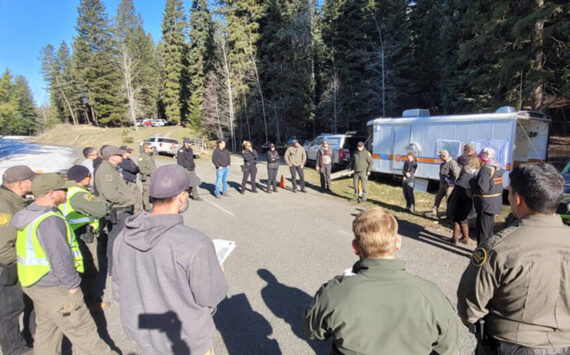Oroville Council hears from county’s Emergency Manager
OROVILLE – Scott Miller, manager of Okanogan County Emergency Management, appeared before the Oroville City Council to discuss the importance of the Multi-Hazard Mitigation Plan, especially in light of the recent devastating Carlton Complex Fires.
“We activated the county Emergency Management Plan, said Miller, adding that while Oroville was not directly involved several cities nearer the fires were called in to help.
The Carlton Complex started as four fires that later combined into two, according to Miller.
“It cost $100 million to suppress. The county and state had $38 million in damage and it cost the county alone just under $1 million – we should be getting 75 percent of that back from FEMA if it can be documented,” he said.
Miller said at its peak on July 15 and 16 the fire grew from 7000 acres to 200,000 acres.
“It was eating up one football field per second,” said Miller.
The mudslides that followed took about one to one and a half hours and covered the Carlton-Chiliwist Road in mud 40 feet deep and took out the phone line. Miller said that FEMA (Federal Emergency Management Agency) will not be covering that damage.
“There is still a danger of flash flooding until the end of the year,” he said.
Miller also said there were about 250 animal carcasses from cattle lost in the fire, which the state Department of Agriculture helped to bury.
“There are still deer plus everything else that will have a tough winter,” he said.
FEMA has $7 million in hazard mitigation grants. If the towns effected had not approved the Hazard Mitigation Plan adopted then FEMA monies would not be available to help,” he said. “Oroville has already adopted the plan and would be covered in case of a disaster.”
In addition to applauding retiring Oroville Police Chief Clay Warnstaff for his help with emergency management, he also said he felt Todd Hill, the next chief, will do well in that position.
In addition, Miller talked about a new Emergency Notification System that will be available for cities to participate in. The system, he said, is in addition to the traditional EAS – Radio/TV system that most people are accustomed to – “The Emergency Broadcasting System.”
He said, “That system is limited during a power outage and if you don’t have your radio on. It wouldn’t have helped us a lot after the Loup Loup transmission line was burned.”
Miller said the county was going to invest in a new system where people can go to a website and sign up for a variety of information.
“They can opt-in to get emergency notifications through email, text, landline, cell phone, social media, etc. Servers will then send out notifications to whoever signs up. It can handle up to 10,000 calls per minute,” he said, adding that the county will be paying out of a homeland security grant the first year.
Miller said the city could participate for sending both emergency and non-emergency messages and that in 2016 the cost to the city would be $816 per year.
“Gives the ability to notify your people in an emergency or non-emergency. All emergencies start local and end local,” he said.
Old Border Patrol Station
City Clerk Kathy Jones said she had contacted representatives at both the U.S. Department of Justice and the General Services Administration regarding the city’s interest in the old U.S. Border Patrol Station on Main Street. The building is now unoccupied because the agency has moved into their new station, just south of the Port of Entry.
“They both quickly replied and sent us an application to complete and both said they look forward to working with us toward that end,” Jones said.
Oroville Council hears from county’s Emergency Manager








Comments are closed.